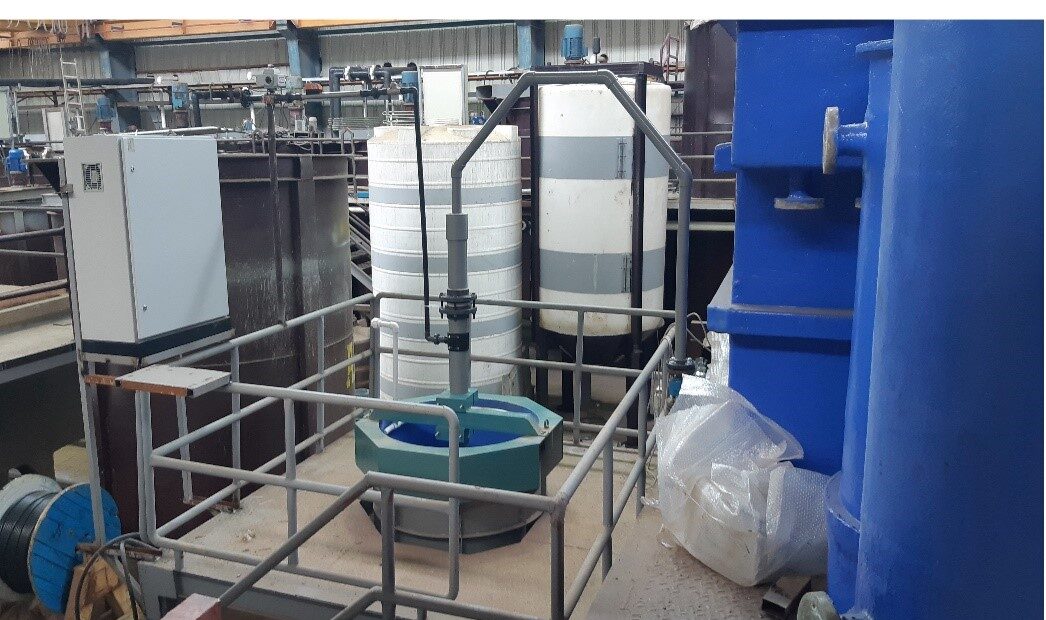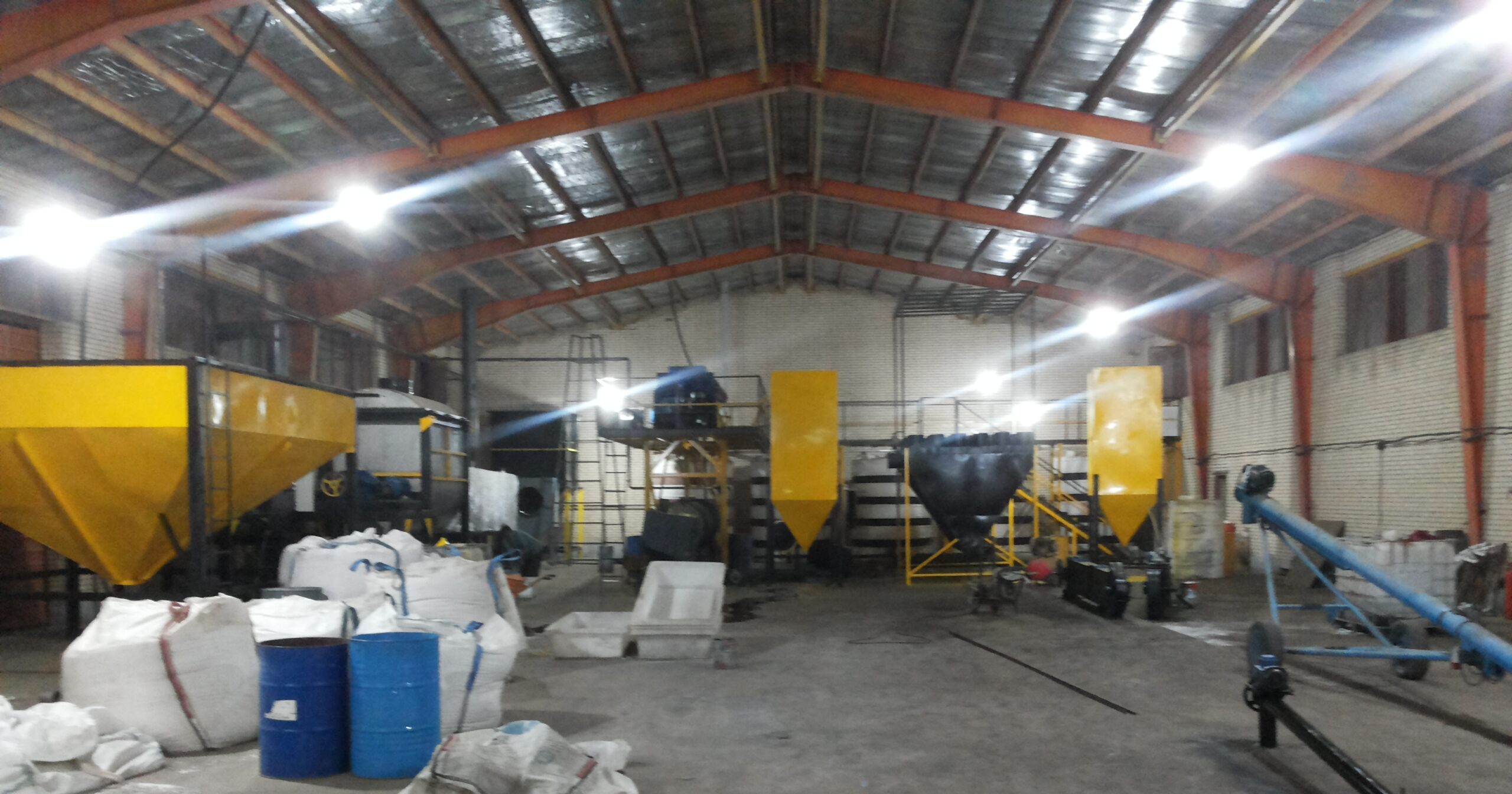What is Flotation or the Science of Froth Flotation?
Flotation, or “froth flotation,” refers to a process of separating materials based on their buoyancy, and is one of the methods used to concentrate or increase the grade of minerals (enrich materials) in industry. Today, flotation is undoubtedly the most important and comprehensive method for mineral separation, and its application is expanding in new fields for the processing of minerals.
Flotation is a process used to separate hydrophobic materials from hydrophilic ones. This method is utilized in industries such as mineral processing, paper recycling, wastewater treatment, and most significantly, in mineral processing industries. Historically, the process was first applied in the mining industry, where it emerged as one of the most powerful technologies of the 20th century. It is also regarded as “the most critical operation employed for the recovery and upgrading of sulfide ores.” The development of flotation has improved the recovery of valuable minerals, such as copper and lead ores. Alongside mechanized extraction, it has enabled the economic recovery of valuable metals from ores with significantly lower grades than in the past.
History of Flotation
In ancient Greece, flotation was initially a common method but was later forgotten until it regained prominence in the late 19th century. Today, it is the most important method for enriching low-grade minerals. The introduction of flotation in 1906 made it possible to process low-grade and complex ores (those containing multiple valuable minerals), which were previously considered uneconomical to exploit.
The first commercially successful flotation process for mineral sulfides was invented by Frank Elmore, who, along with his brother Stanley, worked on its development. In 1897, the Elmore brothers installed the first industrial-scale flotation process for mineral extraction at the Glasdir mine. This flotation process did not involve froth but used oil to agglomerate the powdered sulfides, causing them to float to the surface. This invention was patented in 1898. On April 25, 1900, the operations and processes of the Institution of Mining and Metallurgy in the UK were described, and on June 23, 1900, they were reprinted in the Engineering and Mining Journal of New York City. By this time, the Elmore brothers had realized the importance of air bubbles in assisting the oil in removing mineral particles.
Applications of Flotation
Today, due to the scarcity of high-grade resources in nature, industries are compelled to use lower-grade resources. The introduction of these low-grade resources into the production lines of factories, which were designed for high-grade materials, incurs significant costs. To optimize production, these materials must be concentrated before entering the production circuit.
There are several methods for concentration, one of which is flotation. Flotation plays a key role in improving the efficiency of mineral processing. Increasing the grade of low-grade resources, reduces costs and enhances the efficiency of production lines. “Flotation” is the most important concentration method, primarily used for processing base metals. It is especially employed in the concentration of copper, lead, and zinc sulfide ores. This method is used in most mines in Iran, including the Zirab coal mine in Mazandaran, the Sarcheshmeh copper mine in Kerman, and the Angouran lead and zinc mines.
Stages of Flotation
The first stage of flotation involves separating the particles of minerals present in water. Surface engineering is employed to render the particle surfaces hydrophobic. Then, with the help of appropriate machinery, air bubbles are generated and pumped into the pulp, ensuring uniform distribution throughout the cell. In the next stage, the minerals collide with the air bubbles, and the hydrophobic minerals attach to the bubbles. Due to Archimedes’ principle (the specific weight of the combined air bubbles and minerals is less than that of water), they rise to the surface as froth. It is essential to create conditions that prevent the froth from bursting or losing its load before reaching the surface, ensuring a stable froth. In the final stage, the froth is transferred to the concentrate at a moderate speed.
Why Flotation?
The advantage of flotation over other concentration methods lies in its ability to upgrade low-grade materials, yielding desirable results. Enriching minerals with a metal content of 0.5% to 3% is only feasible and cost-effective through flotation. This is because concentrating such materials using physical methods based on specific gravity has very low efficiency. In gravity-based methods, the recovery rate does not exceed 30% to 40%, whereas flotation can achieve a recovery rate of 80% to 90%.
Types of Flotation Machines
Flotation machines are categorized into two types: mechanical and pneumatic machines. Mechanical machines have agitators, and air is typically drawn into the cell through suction created by the rotation of the agitator (though in many cases, air is injected into the cell). In contrast, pneumatic machines lack agitators and rotors. The turbulent flow of the pulp, along with the air, causes materials to disperse and circulate within the cell. Pneumatic machines always require air injectors and dispersers to function effectively.
Types of Flotation Machines
Denver Machines
A widely used type of mechanical flotation machine known for its robust design and reliable performance in mineral processing.
Wemco Machines
Another mechanical flotation system, Wemco machines are renowned for their efficient mixing and air dispersion capabilities, contributing to better recovery rates.
RCS™ (Reactor Cell System)
A modern flotation machine designed to optimize recovery with enhanced control over air and pulp flow, often used in complex mineral processing applications.
Outotec Tank Cell – e500
This is a high-capacity flotation cell designed by Outotec, focusing on maximizing throughput and ensuring energy efficiency in large-scale mineral processing operations.
Column Flotation Machines
Column flotation systems utilize tall, narrow tanks, which provide a high degree of separation by taking advantage of the differential buoyancy of particles.
Jameson Cell
A highly efficient flotation machine that uses a combination of high pressure and air injection to ensure rapid particle recovery and froth formation.
Pneumatic Flotation Machines (Ekof Type)
Pneumatic flotation machines such as the Ekof type operate without mechanical agitation, relying on air injection to disperse particles and separate them efficiently.
What is a Flotation Circuit?
In mineral processing plants, flotation circuits are used to enrich mineral content through the flotation process. A flotation circuit consists of a collection of flotation machines, and this entire setup is referred to as the “flotation circuit.” Designing a flotation circuit requires precise calculations at laboratory, semi-industrial, and industrial scales. Based on their arrangement in the flotation circuit, machines are given different names. One of the fundamental goals of determining the sequence of flotation circuits is to produce a desirable product from a mineral in an engineered and economically efficient process. The Faramin Asia Industrial Mining Group, with its experienced specialists, is well-equipped to design and operate processing lines efficiently.
Some Flotation Circuits Designed by the Faramine Asia Group
- 500-ton Flotation Circuit for 3 Products, Khales Sazan Zanjan
- 300-ton Flotation Circuit, Zanjan Saded Zinc Smelter
- 30-ton Flotation Pilot Plant, Shemsh Sazan Zanjan
- Cleaner Circuit at Pilot and Industrial Scale, Sarcheshmeh Molybdenum









